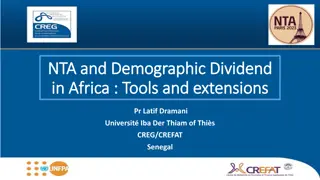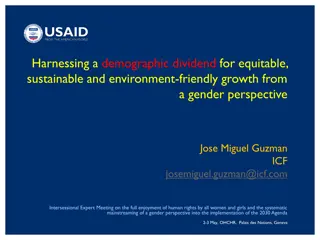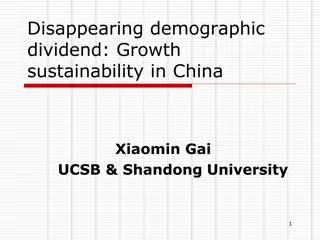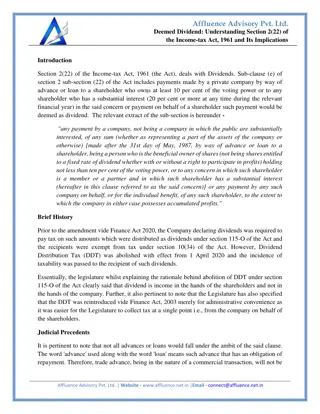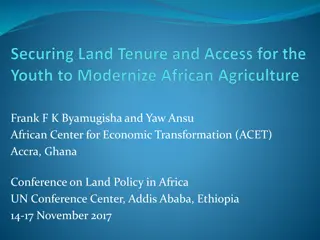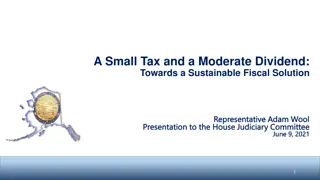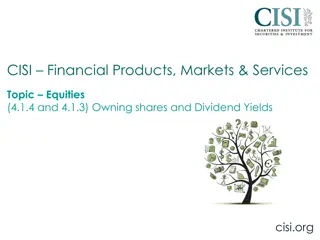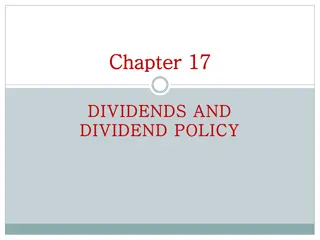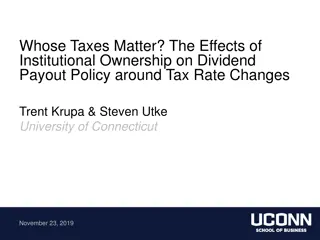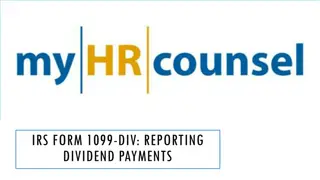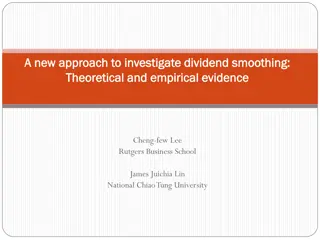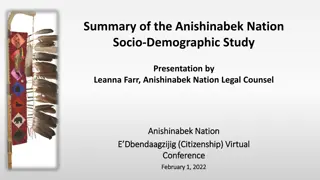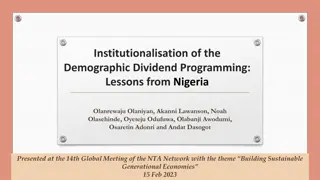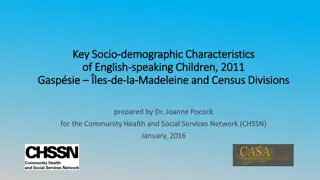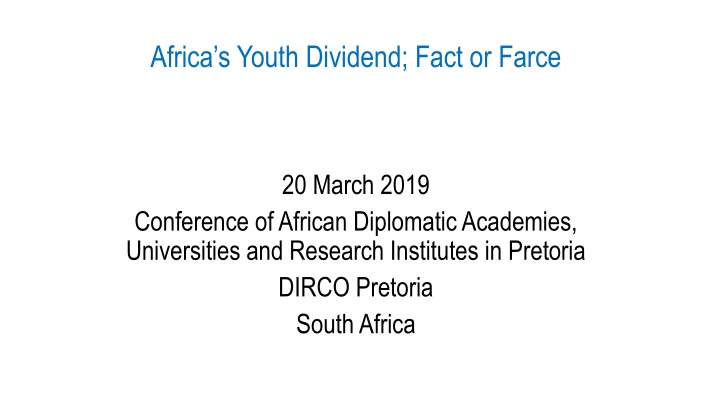
Africa's Youth Dividend: Fact or Farce - Demographic Transformation for Socio-Economic Growth
Demographic dividend in Africa is a pivotal concept for economic development, exploring the potential benefits of a youthful population structure. This entails examining factors contributing to higher productivity, increased GDP per capita, and reduced dependency ratios. The AISA Youth Study delves into the dynamics of youth participation in transforming local and national economies, addressing challenges of poverty and unemployment. Insights from this study shed light on key strategies required to harness the demographic dividend in Sub-Saharan Africa.
Download Presentation

Please find below an Image/Link to download the presentation.
The content on the website is provided AS IS for your information and personal use only. It may not be sold, licensed, or shared on other websites without obtaining consent from the author. If you encounter any issues during the download, it is possible that the publisher has removed the file from their server.
You are allowed to download the files provided on this website for personal or commercial use, subject to the condition that they are used lawfully. All files are the property of their respective owners.
The content on the website is provided AS IS for your information and personal use only. It may not be sold, licensed, or shared on other websites without obtaining consent from the author.
E N D
Presentation Transcript
Africas Youth Dividend; Fact or Farce 20 March 2019 Conference of African Diplomatic Academies, Universities and Research Institutes in Pretoria DIRCO Pretoria South Africa
Outline What is mean by Youth Dividend How does it happen What are the mitigating factors HSRC Youth project, why this study? What did we find - excerpts?
Demographic dividend, what does it mean? Demographic dividend refers to the growth in an economy emanating from a change in the age structure of a country s population (UNPF). It is a period usually characterised by low fertility and mortality rates (Ross, 2004)
Demographic dividend, underlying assumptions Dependency: healthcare, education, sustenance < 15 Working population: savings, investments, productivity growth 15 - 64 Dependency: Healthcare, retirement income etc. 65+
Demographic dividend How does it happen? 4 key channels Higher productivity Increased GDP per capita/declining birth rate Fewer births higher resources per child Health, education etc. Enhanced GDP per capita growth Human capital dev t. Labour Supply Savings Labour force grows Female LFPR 1st& 2nddividend Reduced dependency Increase in savings
The AISA Youth Study why such a study Entry-Points for Utilizing the Demographic Dividend in Sub-Saharan Africa: An Examination of the Dynamics of Youth Participation in Local and National Socio- Economic Transformation Processes Africa s youth bulge, youngest population, prevalence of poverty and unemployment on the continent, what is required to realise the youth dividend? What is the status quo of these entry points for realising a youth dividend in Africa Do the youth have a voice in socio-economic transformation that impinge on their development? Ghana, Zambia, Kenya, Botswana, Cote D Ivoire &, Tanzania, sequential exploratory study, approximately 1200 youth in six countries.
What we found - challenges Well-crafted national youth policies - implementation a big challenge High levels of youth unemployment (65% average) - narrow production structure. There were very few avenues or opportunities for start-up funding for entrepreneurship initiatives, linked to technical assistance to support income earning activities of the youth. Only a few existed mostly established by international NGOs and to a much lesser extent government. The quality of education and its infrastructure, skills mismatch, Health service delivery and infrastructure had enormous room for improvement. Policy uncertainty and incoherence, poor institutional quality, corruption, red tape and deficits in good governance and leadership emerged as significant challenges in each of these six countries. There were barely any platforms for youth advocacy that served as channels through which the youth could make their voices heard. The few that existed were established by NGOs rather than the governments in these countries.
What we found - opportunities 25% 25% 19% 20% 20% 15% 11% 10% 7% 8% 5% 5% 0% 2% Credit/microfinance Good education 3% Entrepreneurship oportunities Capacty building Jobs Self employmemt Scholarship Internet access Don t know
Conclusion more questions than answers A paradigm shift needed in our perspective to addressing the youth bulge challenge 4IR has already began, highly disruptive loads of retrenchments foreseen due to rapid technological progress We haven t yet solved our present labour challenges how much more the future of work , what are the implications for our youth?
What is the way forward? Lets discuss Image result for cartoon images of group discussion
Thank You Dr Emmanuel Sekyere Chief Research Specialist Human Science Research Council www.hsrc.ac.za



